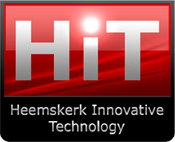
HIT joins ESS Task Force
This summer, HIT joins a Task Force to study the replacement of the bottom moderator of the European Spallation Source (ESS).
This summer, HIT joins a Task Force to study the replacement of the bottom moderator of the European Spallation Source (ESS).
This summer, HIT joins a Task Force to study the replacement of the bottom moderator of the European Spallation Source (ESS). ESS is a multi-disciplinary research centre based on the world’s most powerful neutron source. This new facility will be around 30 times brighter than today’s leading facilities, enabling new opportunities for researchers in the fields of life sciences, energy, environmental technology, cultural heritage and fundamental physics [ESS]. On 4 July 2014, the European Spallation Source received approval to start construction in Lund, Sweden [Go].
The European Spallation Source facility design and construction includes a linear proton accelerator, a heavy-metal target station, a large array of state-of-the-art neutron instruments, a suite of laboratories, and a supercomputing data management and software development center. In the context of its history and future as a scientific organisation, it is however more than an advanced research tool. It is a brand new organisation, being built from the ground up. Activation of the ESS target area creates some challenges in the remote maintenance. A specific challenge is found in the maintenance of the moderator. A new moderator concept is under development, with the original moderator split into two separate units (top and bottom) For the bottom moderator, a Task Force is being set up to analyse the inclined MR extraction concept.
